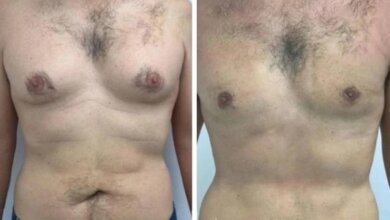Key Features of Pradhan Mantri Matru Vandana Yojana for Pregnant Women in India
India has launched several welfare schemes over the years to improve maternal and child health. Among these, the Pradhan Mantri Matru Vandana Yojana (PMMVY) stands out as a flagship programme designed to provide partial wage compensation to pregnant and lactating women. Introduced by the Ministry of Women and Child Development, PMMVY aims to help women access nutritious food, promote health-seeking behaviour, and reduce the financial burden of childbirth.
This article will explore the main features of the PMMVY scheme, how it differs from other programmes like PMJAY, eligibility criteria, and the process of availing benefits.
What is Pradhan Mantri Matru Vandana Yojana?
The Pradhan Mantri Matru Vandana Yojana is a maternity benefit programme implemented across India. It was launched on 1st January 2017 to replace the earlier Indira Gandhi Matritva Sahayog Yojana. The scheme is intended to improve the health and nutrition of pregnant women and lactating mothers, especially those working in the informal sector who often lose wages due to pregnancy.
PMMVY provides a cash incentive of Rs. 5,000 in three instalments, directly transferred to the beneficiary’s bank account upon fulfilling certain health-related conditions. This financial support helps cover expenses like nutritious food, regular health check-ups, and other basic requirements during pregnancy and early motherhood.
Objectives of the scheme
PMMVY has multiple goals:
- To provide partial wage compensation so women can rest adequately before and after delivery.
- To encourage women to seek proper antenatal care and follow health protocols.
- To reduce maternal and infant mortality by promoting institutional deliveries.
- To improve health and nutrition among women and children during the critical stages of pregnancy and early infancy.
By addressing both economic and health challenges, PMMVY plays an important role in strengthening maternal care infrastructure in India.
Who is eligible for PMMVY?
Eligibility criteria under PMMVY are clearly defined:
- The woman should be pregnant with her first living child.
- She must be 19 years of age or older at the time of pregnancy registration.
- She should be adhering to prescribed health protocols like antenatal care visits, immunisation, and childbirth registration.
- The scheme is applicable to all women except those in regular employment with central/state government or those receiving similar benefits under other laws.
Women enrolled under the Janani Suraksha Yojana can also avail PMMVY benefits. However, the cash incentive received under JSY will be adjusted against the PMMVY instalment to avoid duplication.
Key features of PMMVY
Let’s look at some of the important features that make PMMVY one of India’s leading maternity benefit programmes:
Conditional cash transfer
The scheme provides a total incentive of Rs. 5,000, distributed in three instalments upon meeting specified conditions:
- First instalment (Rs. 1,000): On early registration of pregnancy at an anganwadi centre or approved health facility within 150 days.
- Second instalment (Rs. 2,000): After six months of pregnancy if at least one antenatal check-up has been completed.
- Third instalment (Rs. 2,000): After childbirth registration and the child’s first cycle of immunisation (BCG, OPV, DPT, and Hepatitis B).
This staggered payment system ensures continuous engagement with the healthcare system and encourages women to complete all necessary health check-ups.
Direct benefit transfer
Funds are transferred directly into the beneficiary’s bank or post office account to ensure transparency and minimise leakage. Beneficiaries must have an Aadhaar-linked bank account for seamless payments.
Role of anganwadi centres
Anganwadi centres play a critical role in implementing PMMVY. They help women with:
- Registration under the scheme.
- Record maintenance.
- Verifying eligibility and completion of health milestones.
- Coordinating with health functionaries for immunisation and health check-ups.
Linkage with health and nutrition services
PMMVY is designed to be integrated with other programmes such as:
- Integrated Child Development Services (ICDS): For supplementary nutrition and health education.
- Health services under National Health Mission: Including antenatal care and institutional deliveries.
- PMJAY (Ayushman Bharat – Pradhan Mantri Jan Arogya Yojana): Which provides hospitalisation cover, complementing PMMVY’s maternity benefits.
By aligning these services, the government aims to deliver holistic care for mothers and infants.
Monitoring and grievance redressal
A dedicated web-based Management Information System (MIS) has been developed for real-time monitoring of scheme implementation. Beneficiaries can track their application status and lodge complaints if there are delays or discrepancies in payments.
Awareness generation
Community-level awareness campaigns are regularly conducted to inform women about the scheme, eligibility, and registration process. ASHA workers and anganwadi functionaries often play an active role in educating families about PMMVY benefits.
How PMMVY differs from PMJAY
Many people confuse PMMVY with PMJAY, also known as Ayushman Bharat. However, both serve different objectives:
- PMMVY: Focuses on maternity benefits and partial wage compensation during pregnancy and lactation.
- PMJAY: Provides health insurance cover up to Rs. 5 lakh per family per year for hospitalisation, including maternity-related expenses in empanelled hospitals.
These schemes complement each other, ensuring pregnant women can access both preventive care and hospital treatment without financial burden.
Process to apply for PMMVY
To apply for PMMVY:
- Visit the nearest anganwadi centre or health facility.
- Fill out Form 1-A for pregnancy registration.
- Provide necessary documents such as Aadhaar, bank passbook, and MCP (Mother and Child Protection) card.
- Submit the form to the anganwadi worker.
- Subsequent forms (Form 1-B and 1-C) are submitted after meeting the respective conditions for the second and third instalments.
Women can also track the progress of their application using the PMMVY CAS (Common Application Software) portal.
Conclusion
The Pradhan Mantri Matru Vandana Yojana is a landmark initiative aimed at supporting pregnant and lactating mothers across India. By offering conditional cash transfers and linking them with essential health services, the scheme improves maternal nutrition, encourages health check-ups, and promotes safe deliveries.
Together with broader health initiatives like PMJAY, PMMVY reflects the government’s commitment to reducing maternal mortality and building a healthier future for mothers and children. If you or someone you know is eligible, it is advisable to enrol early and avail the benefits to ensure both mother and child get the care they deserve.




